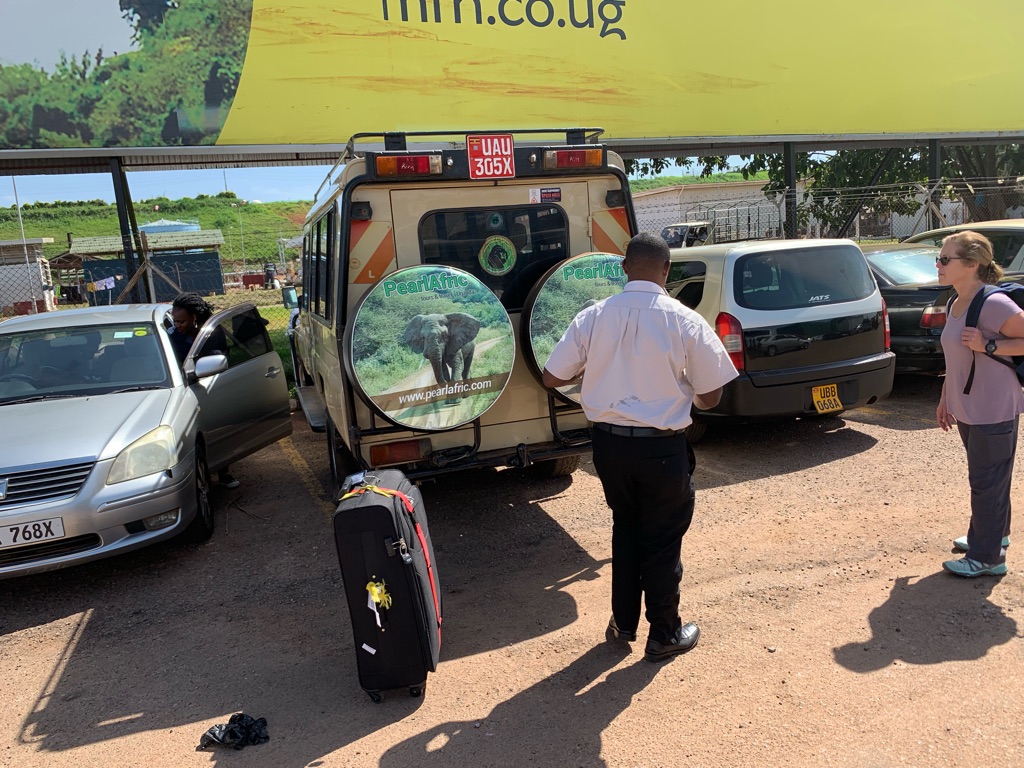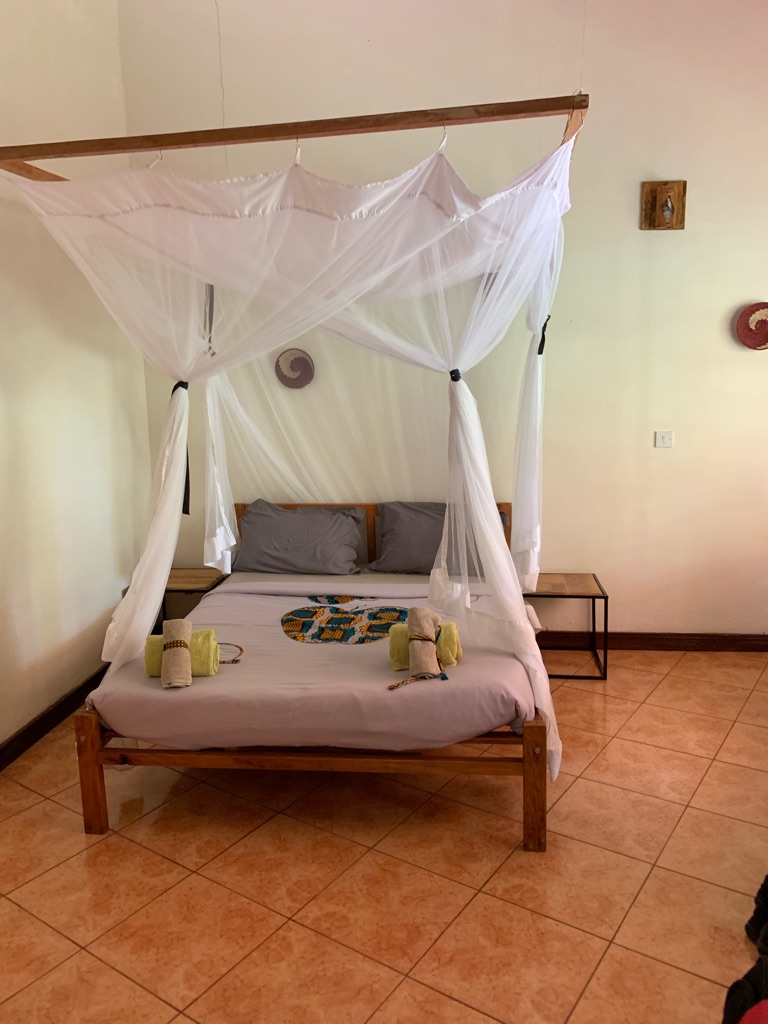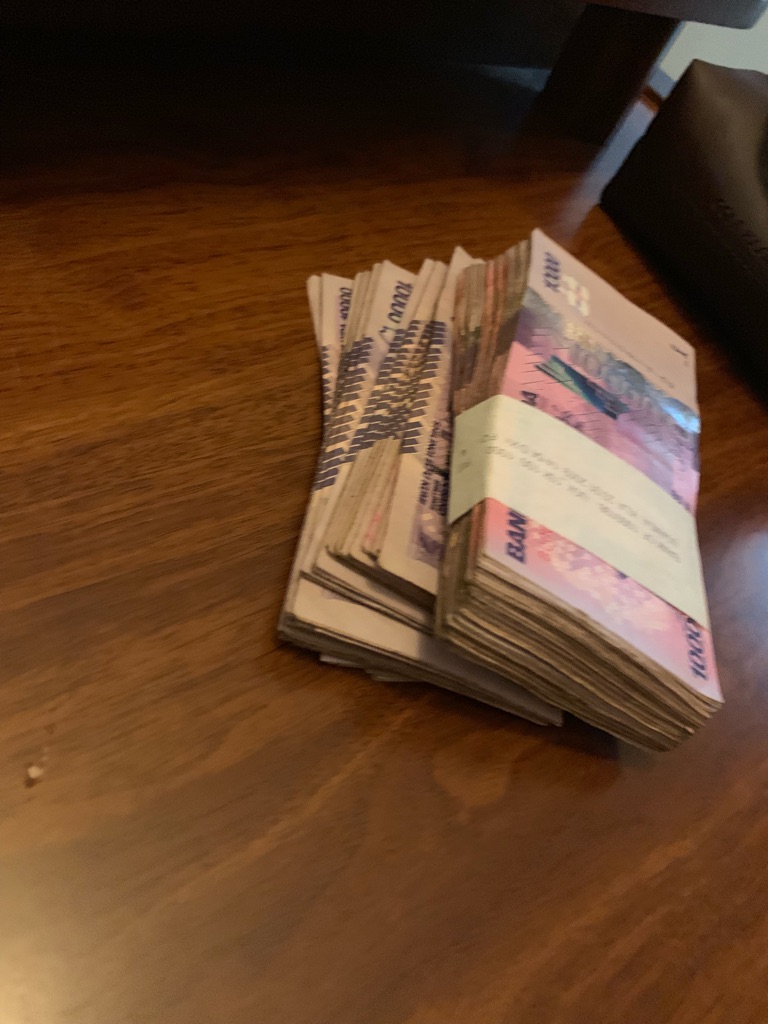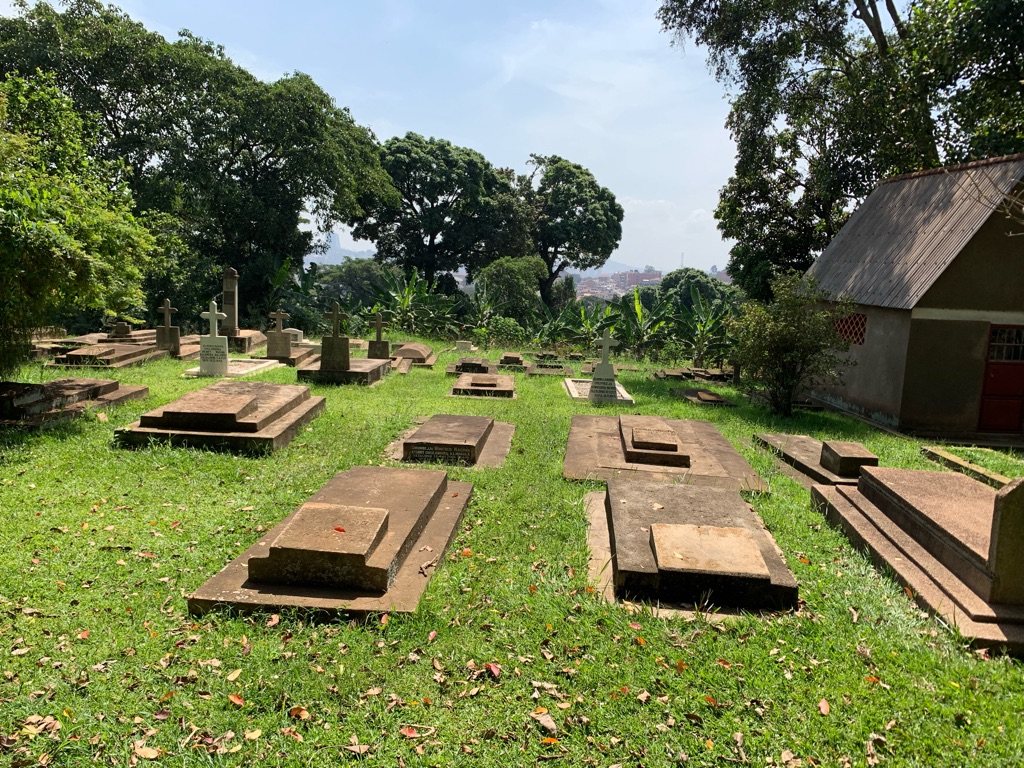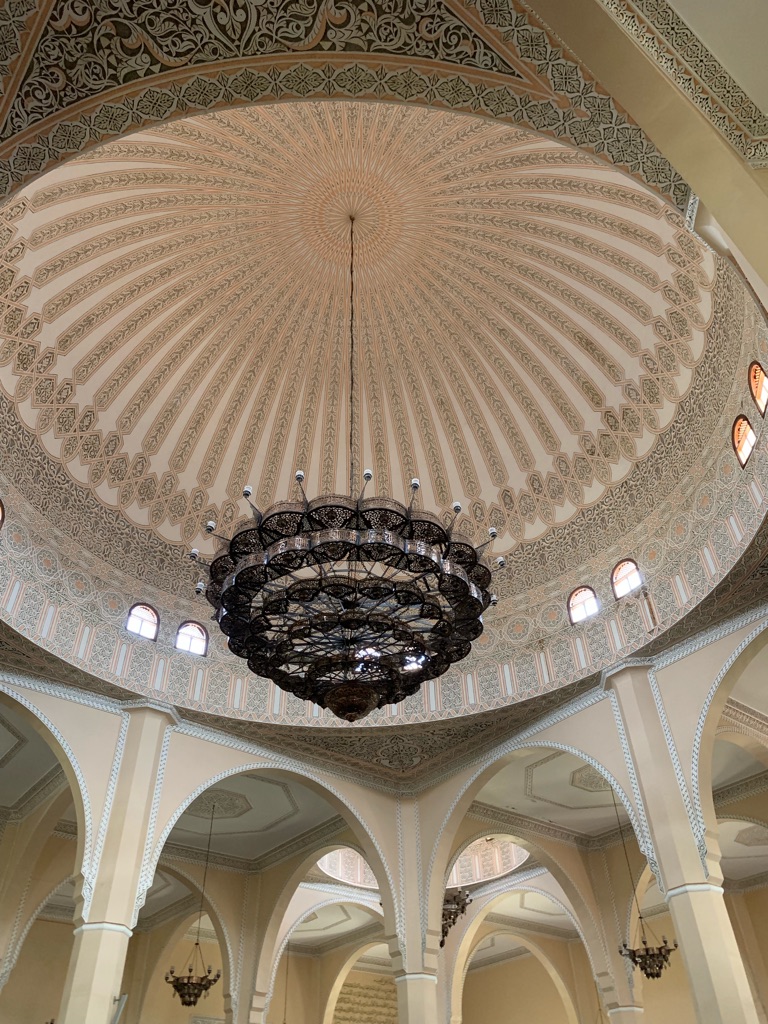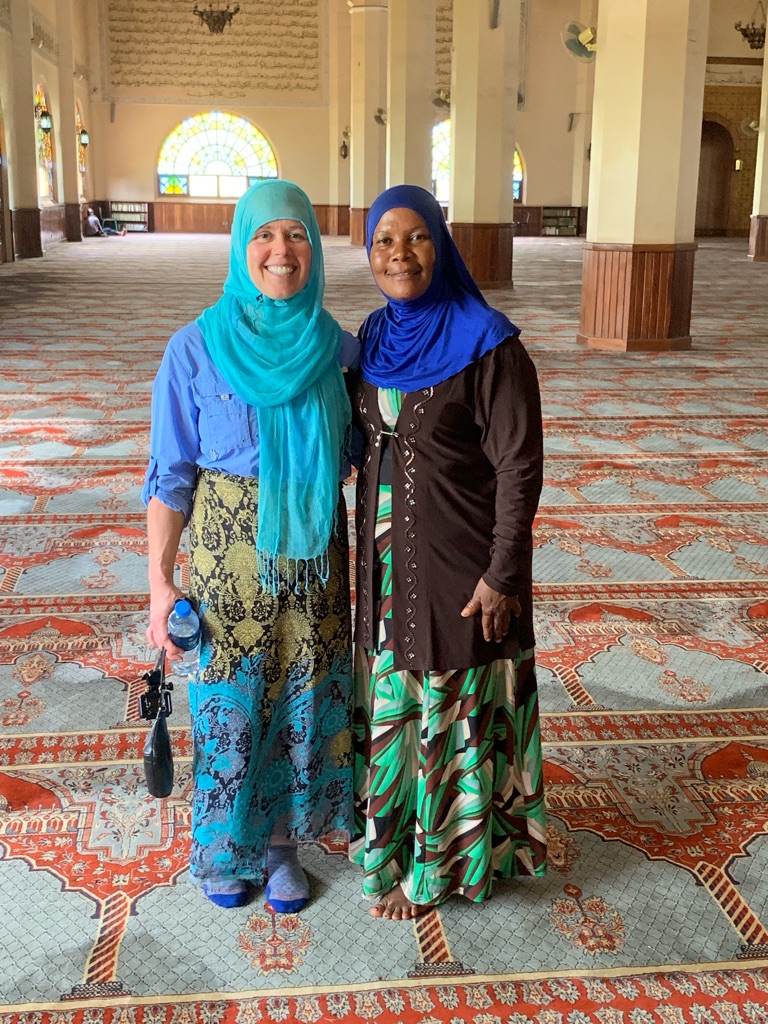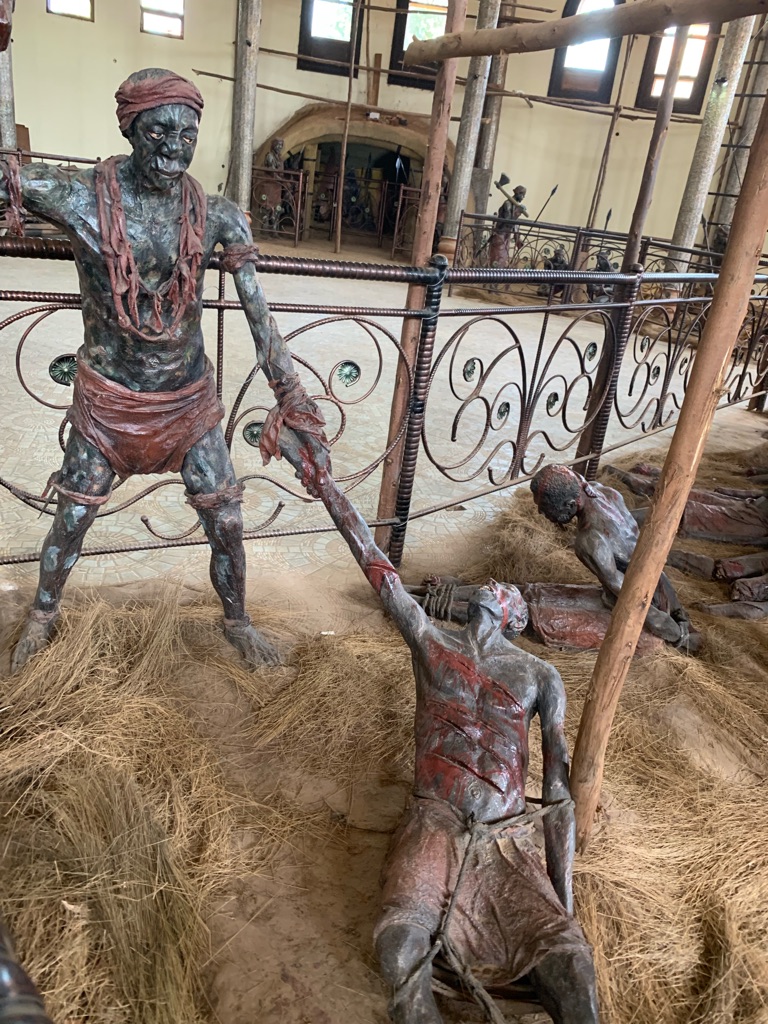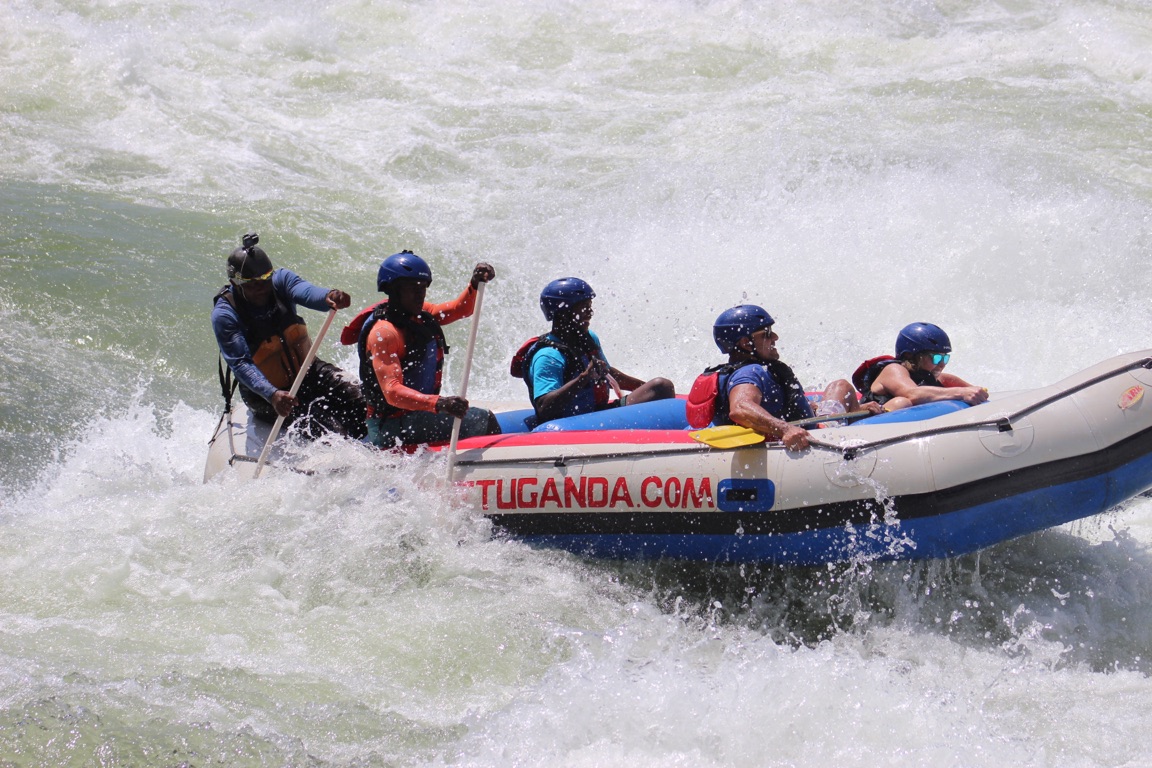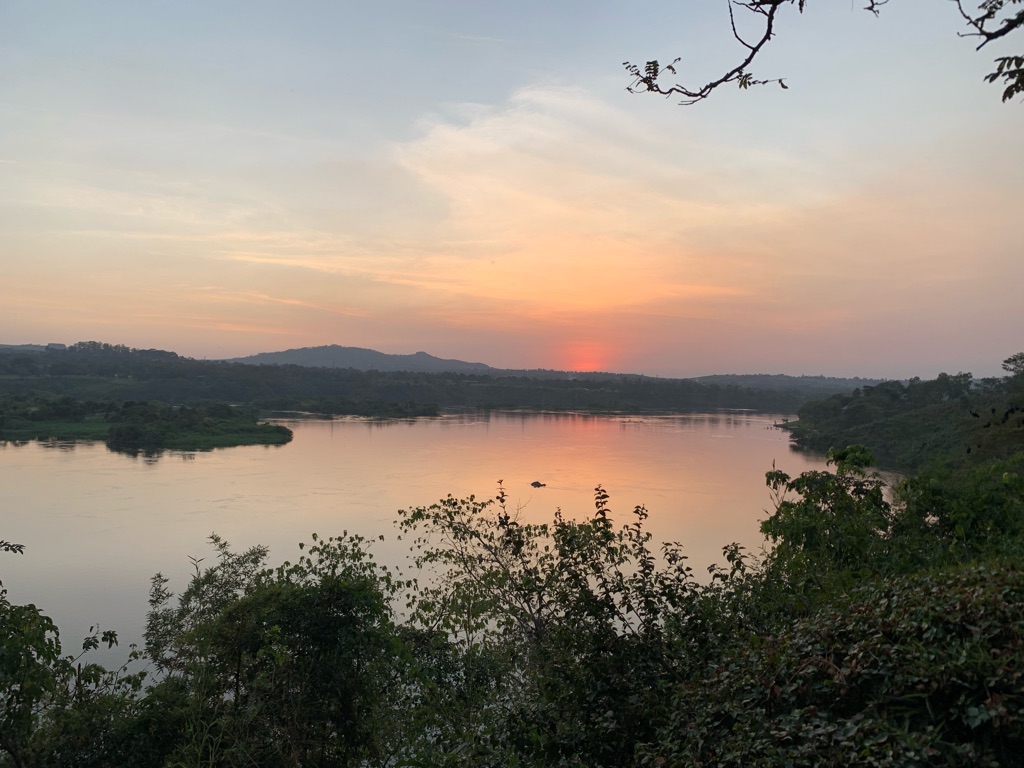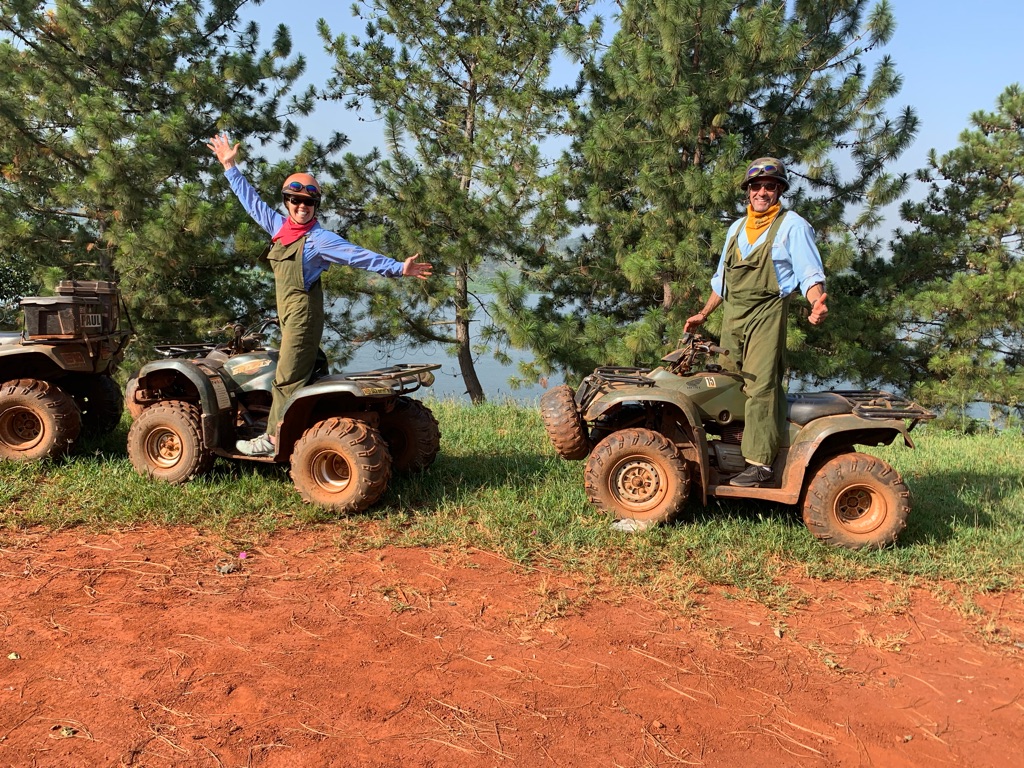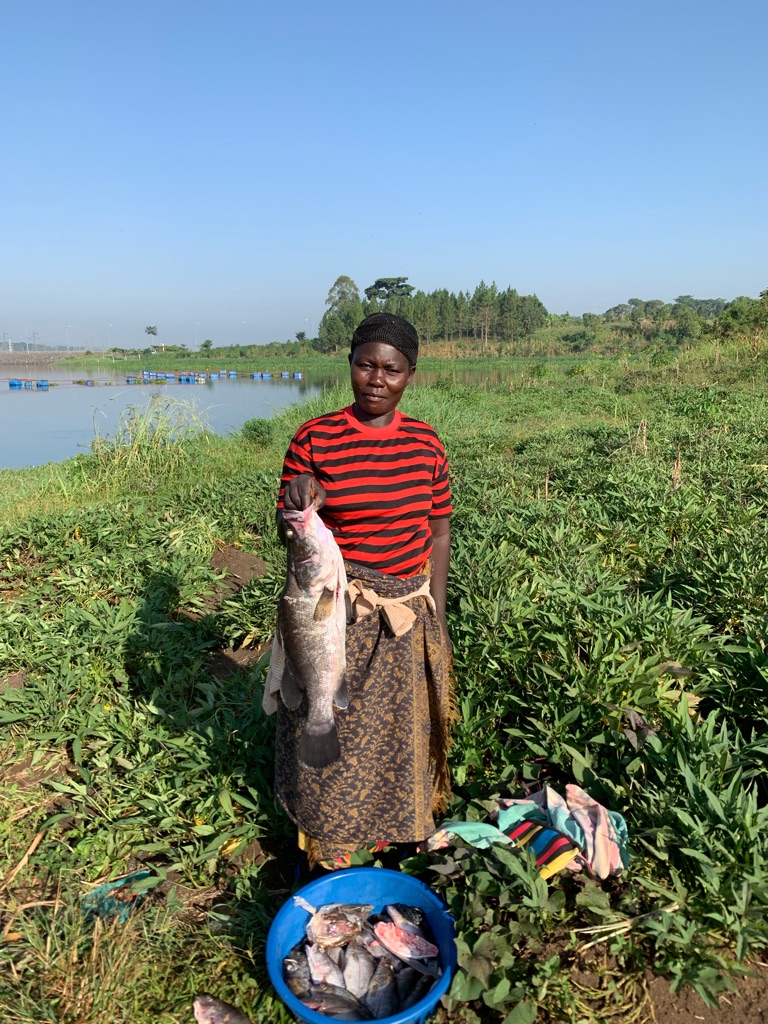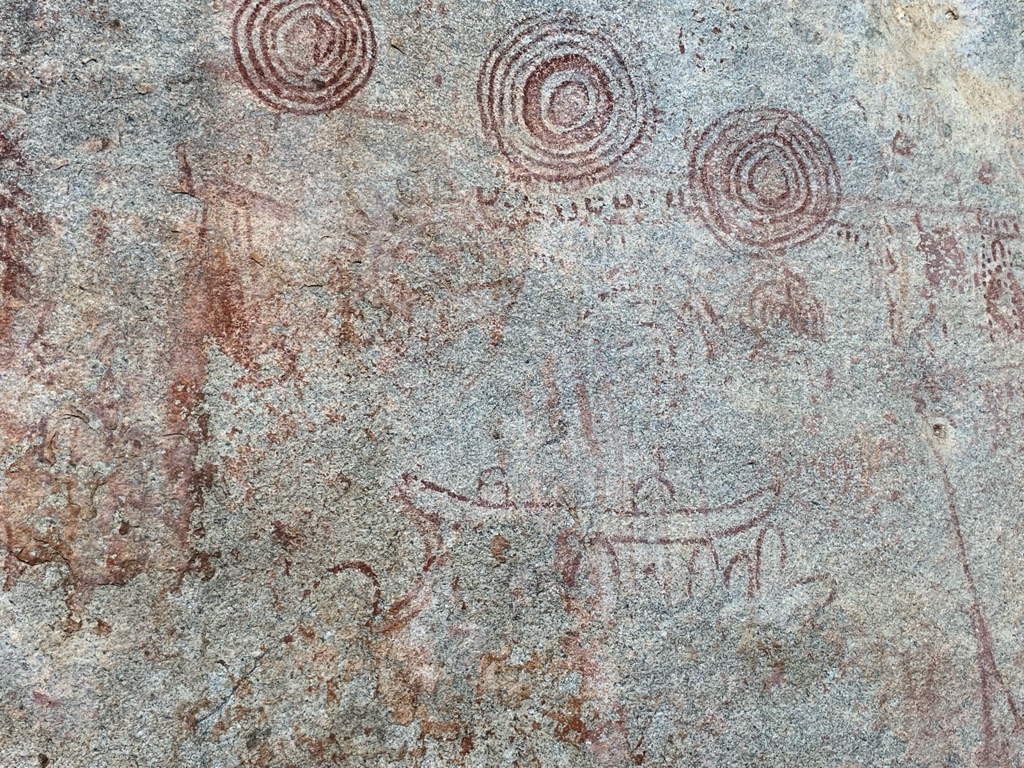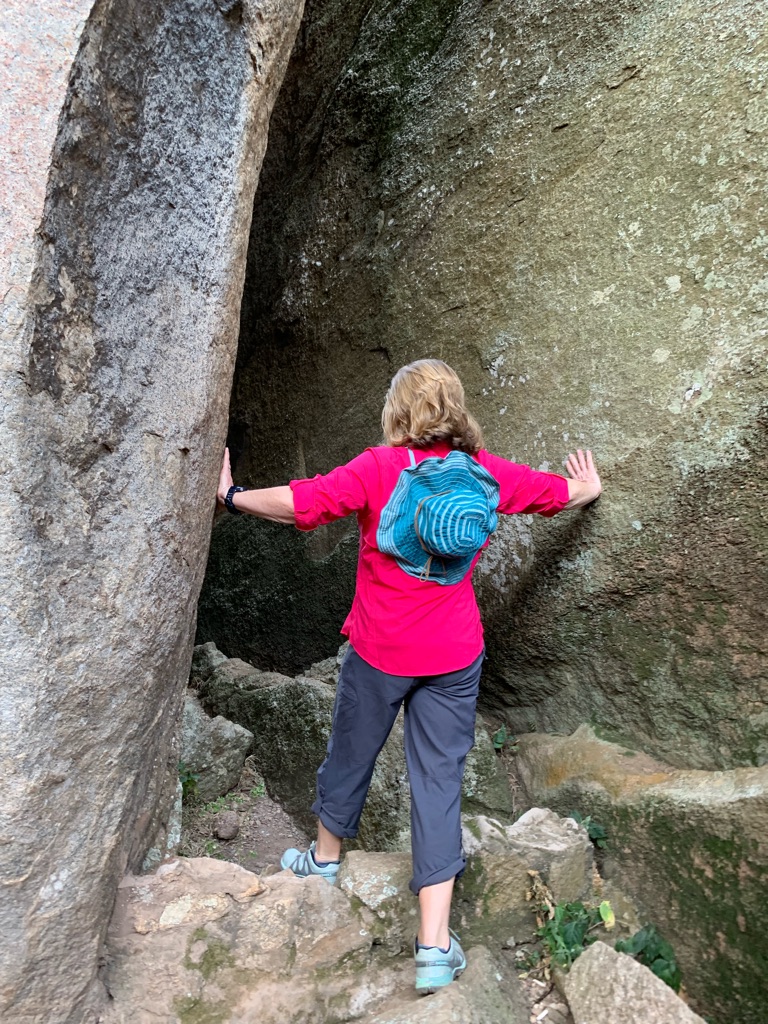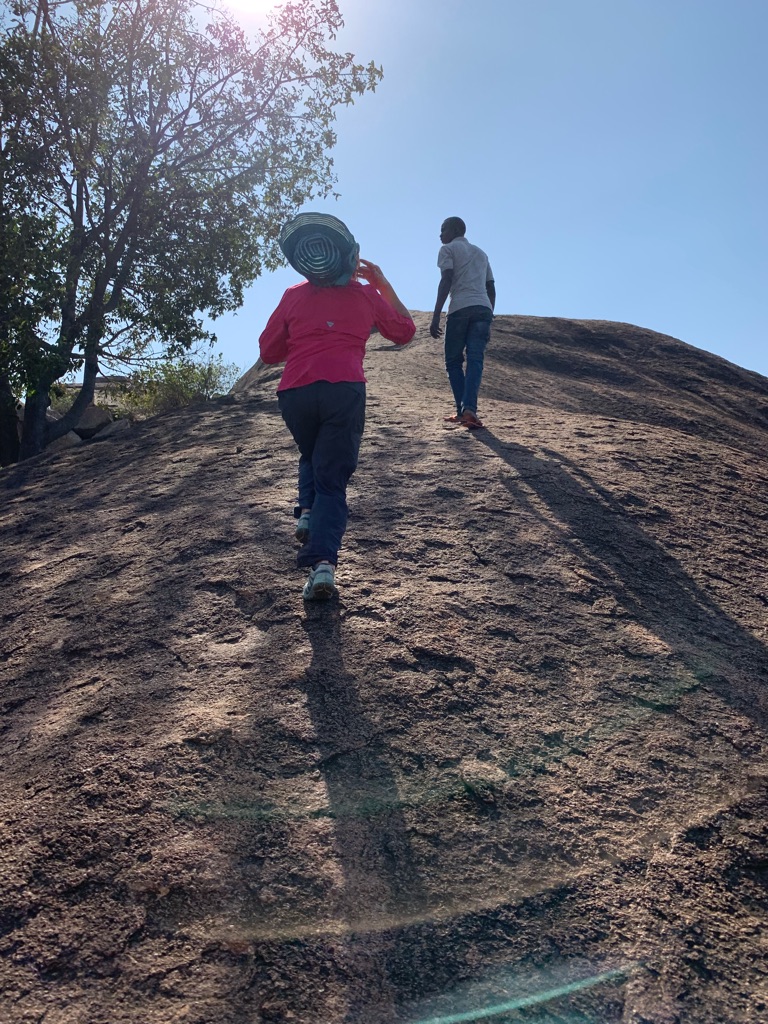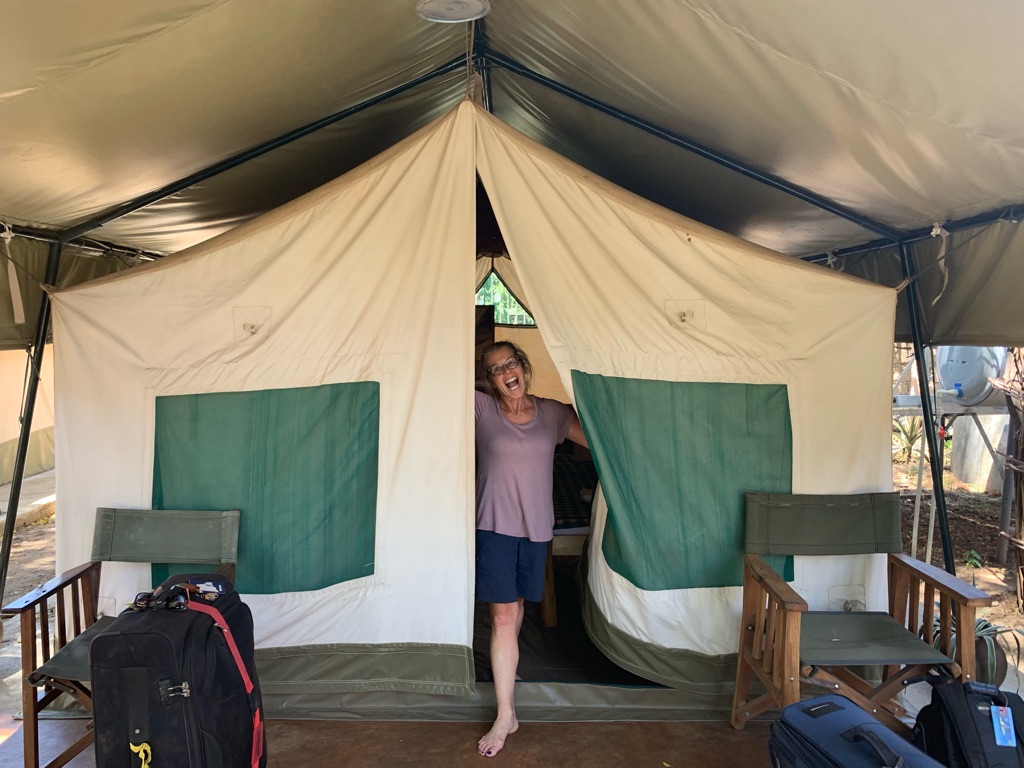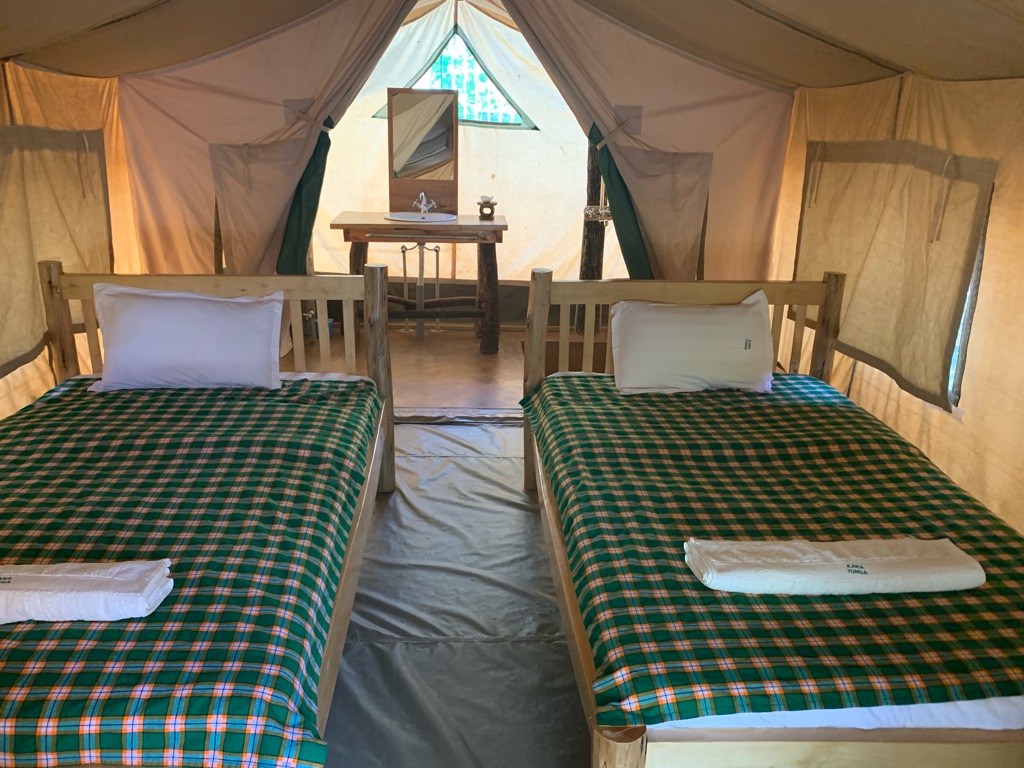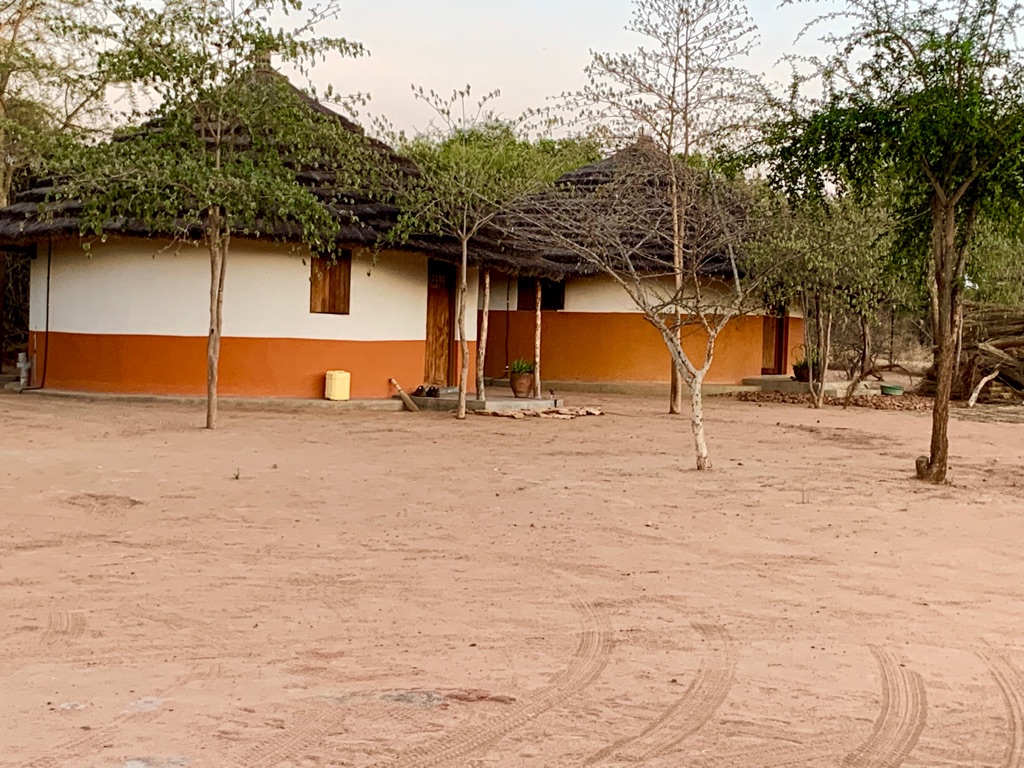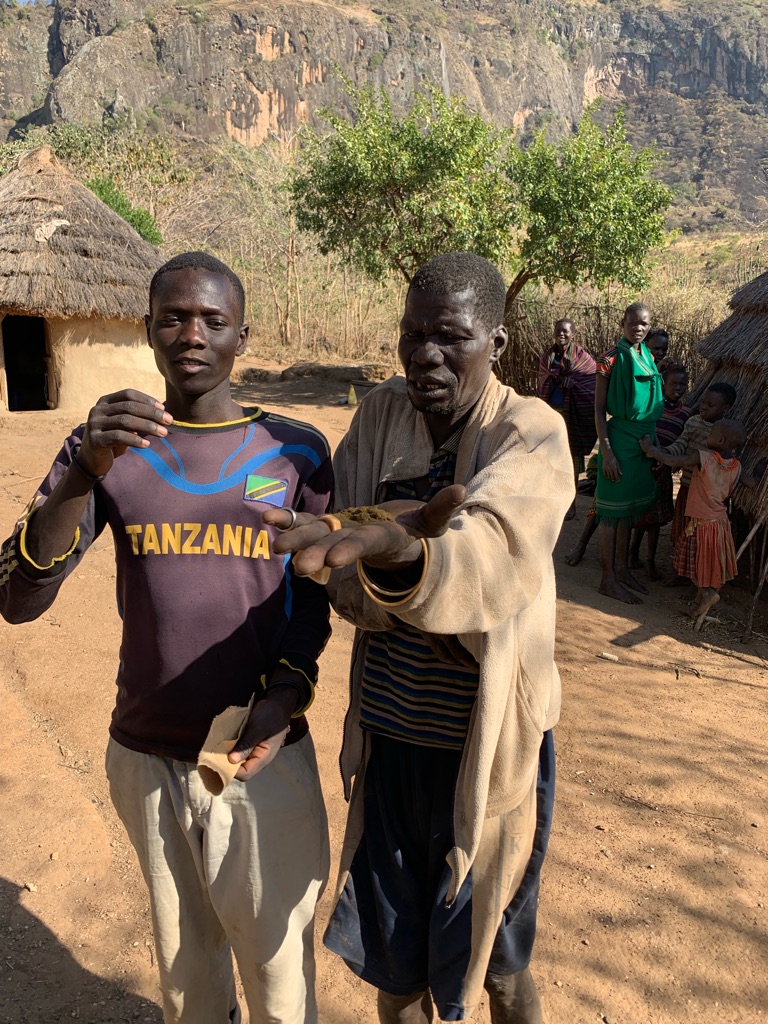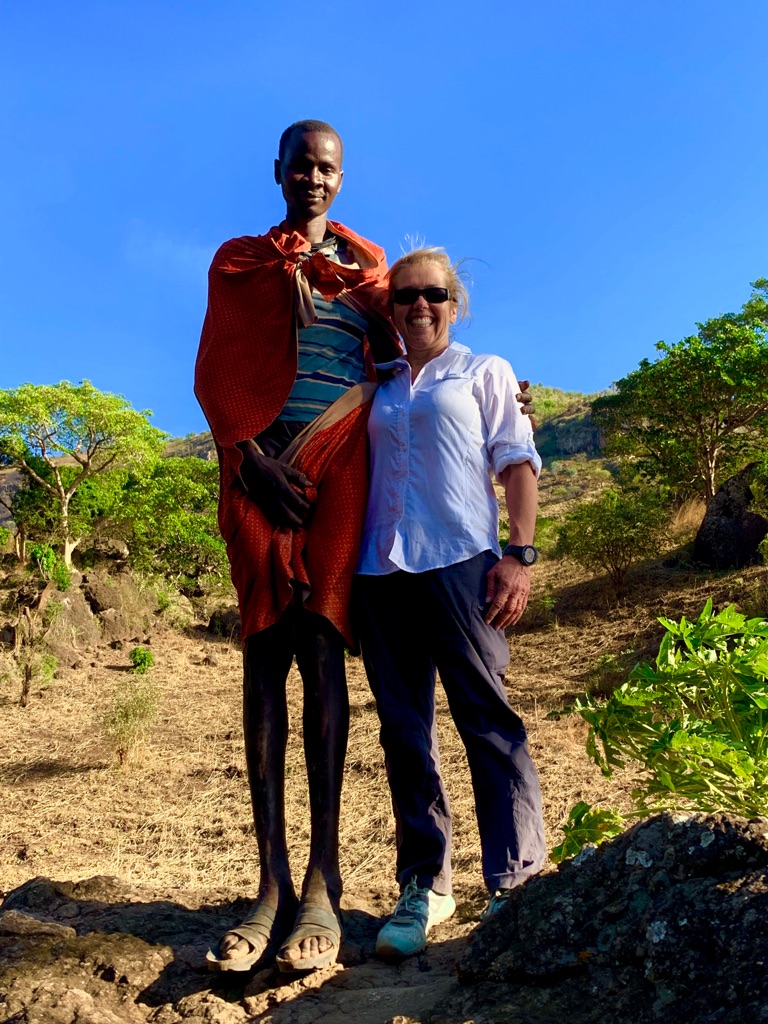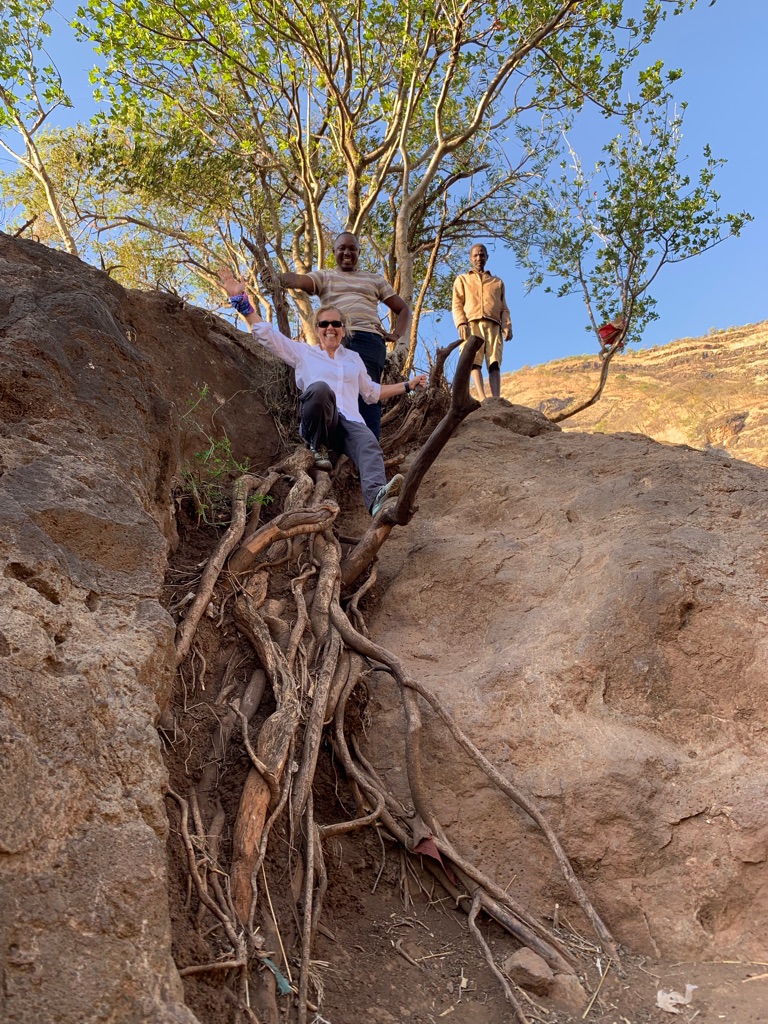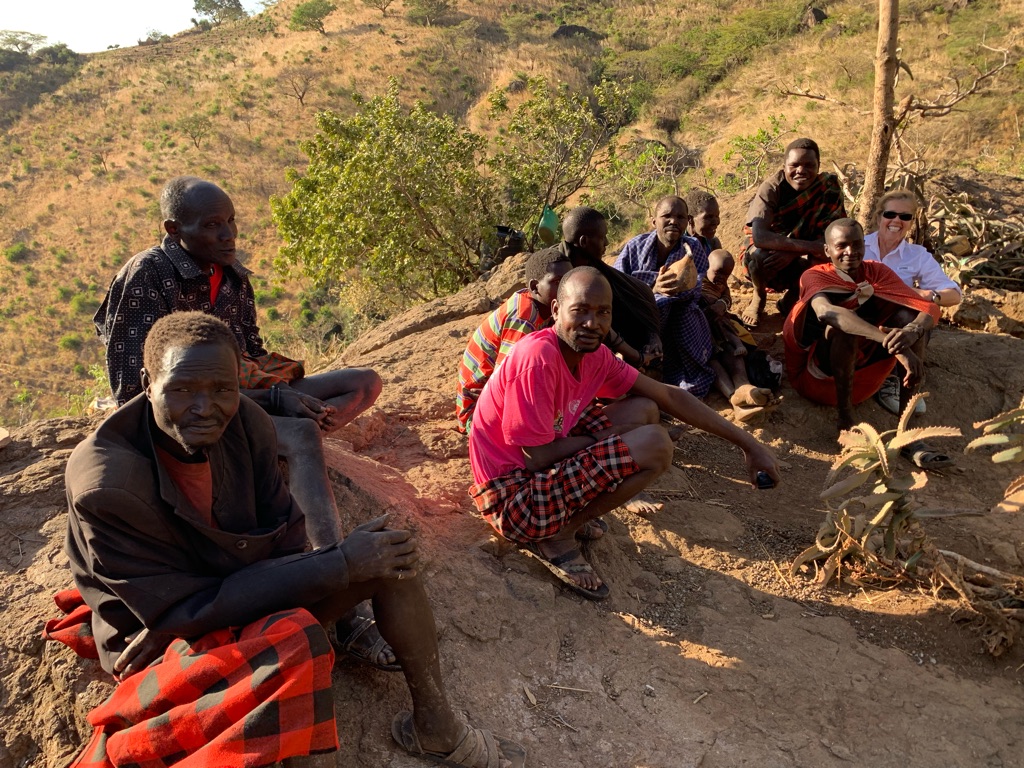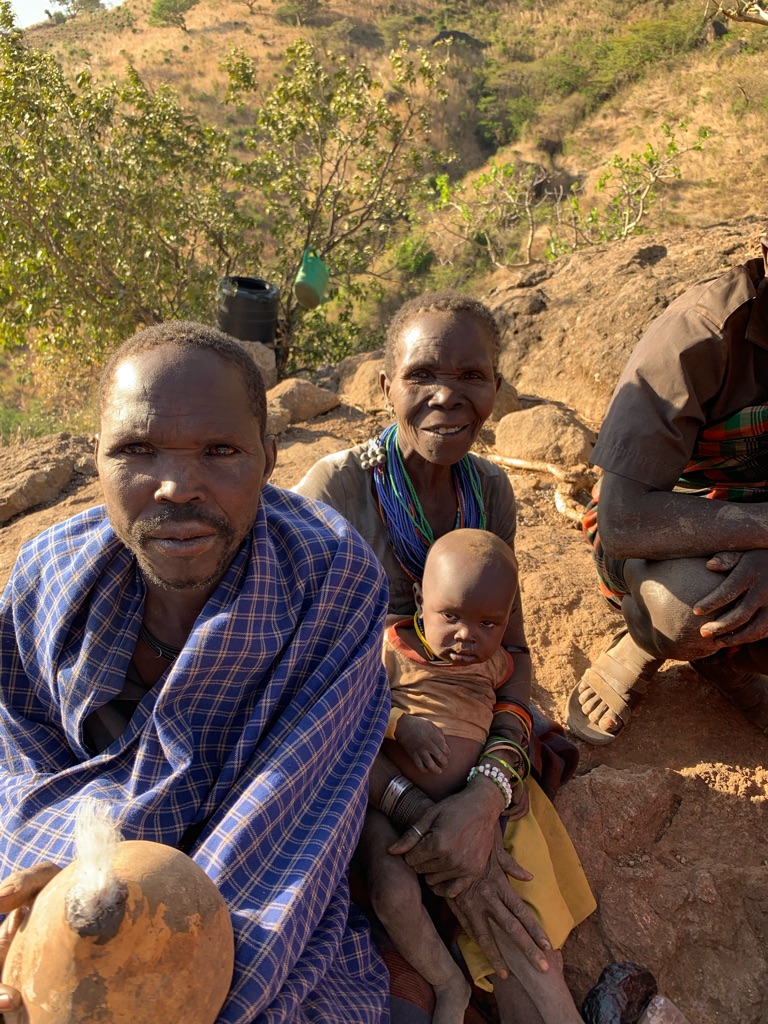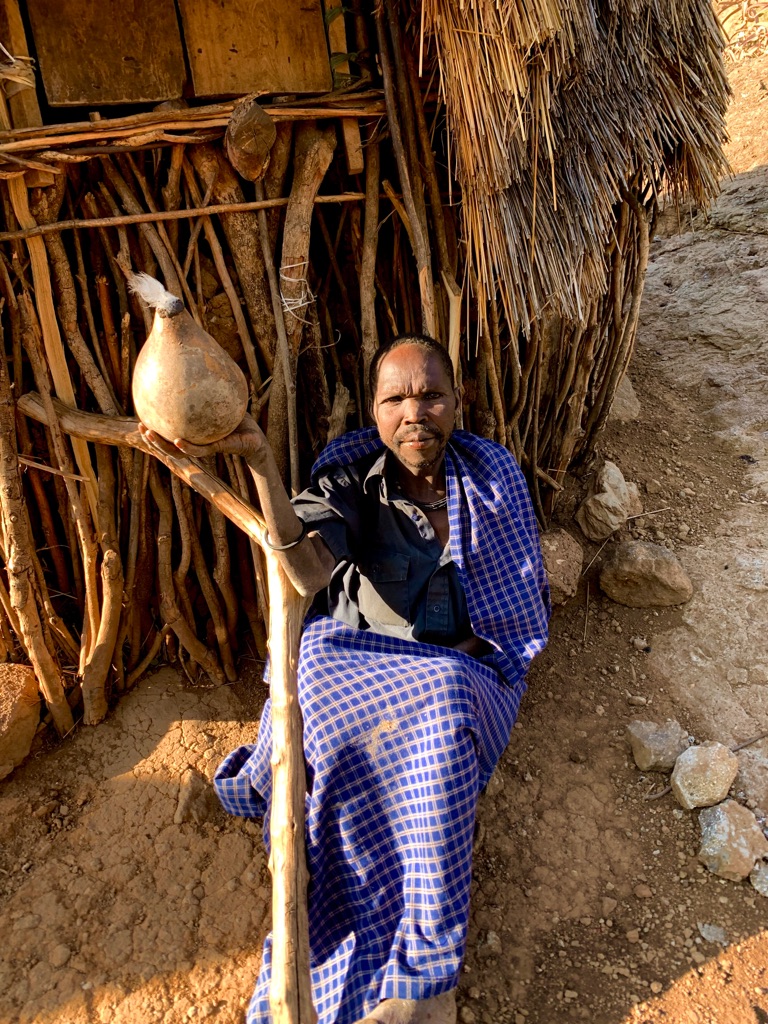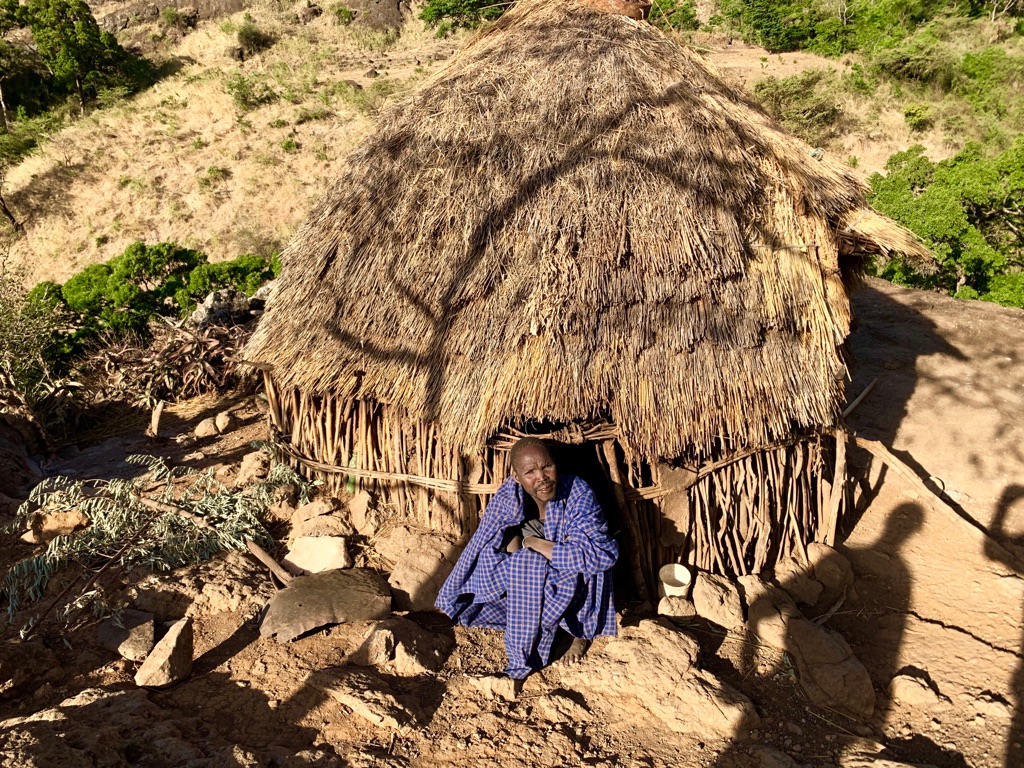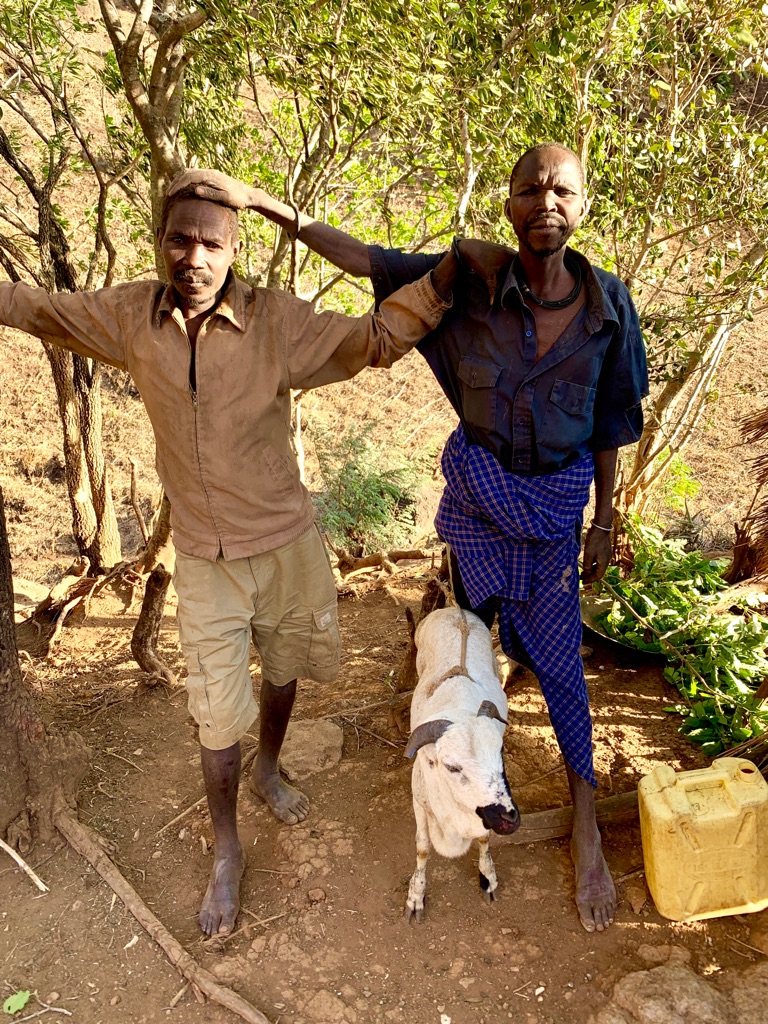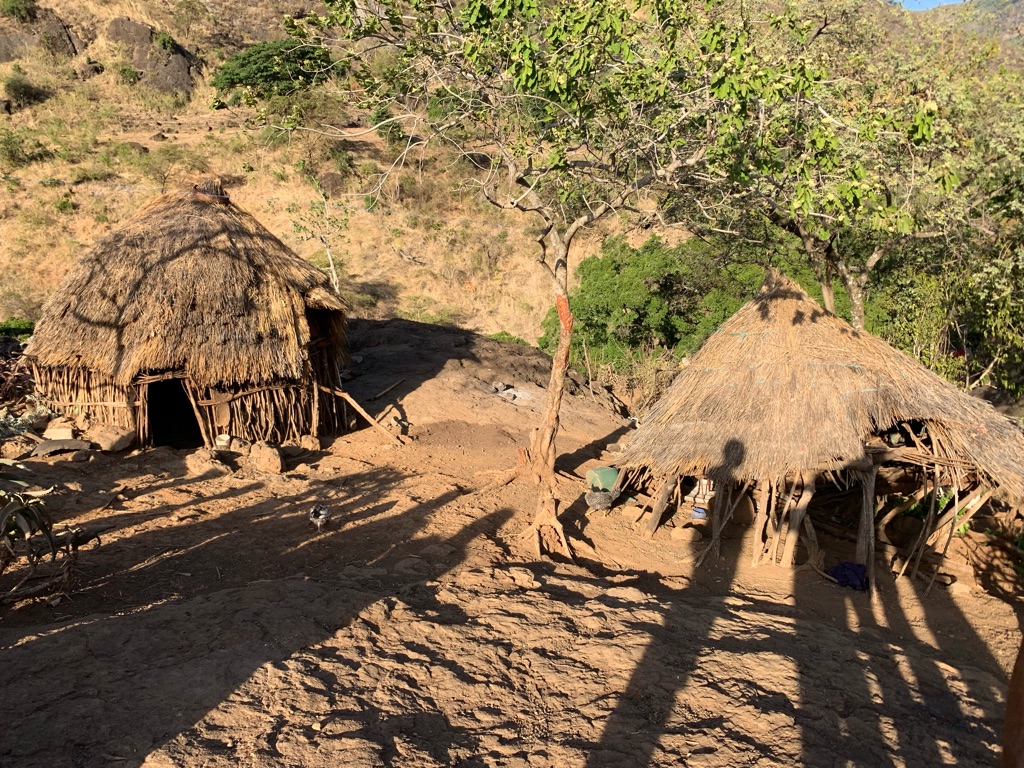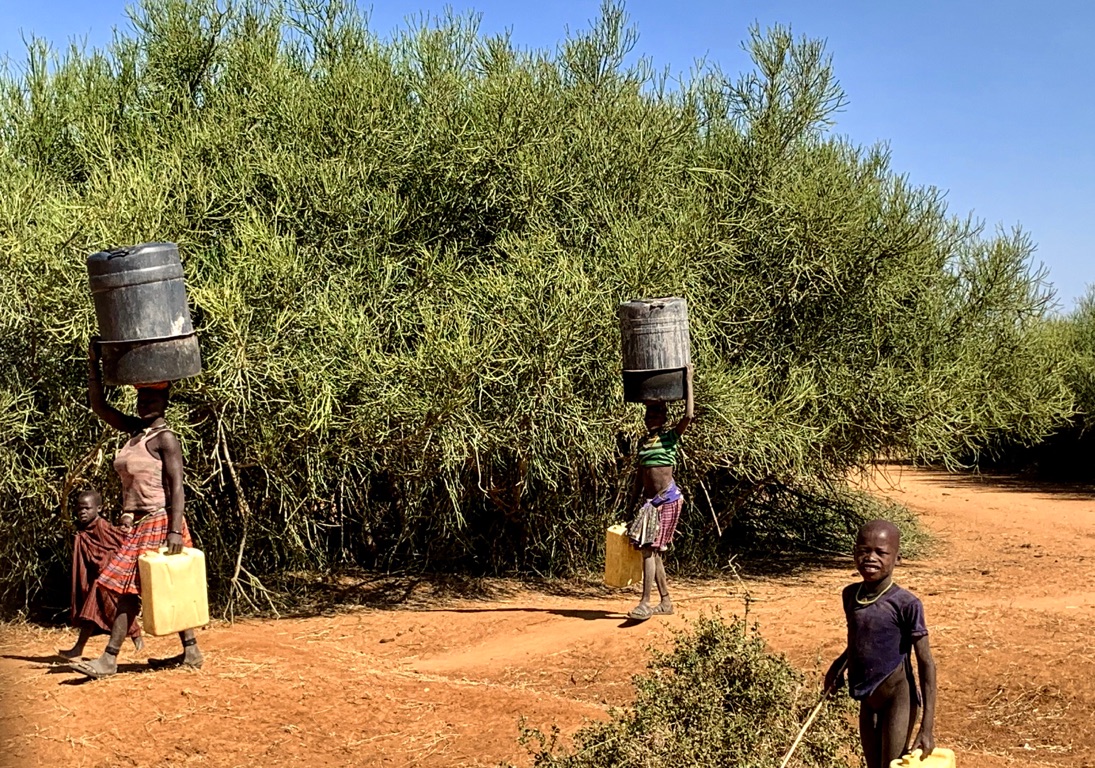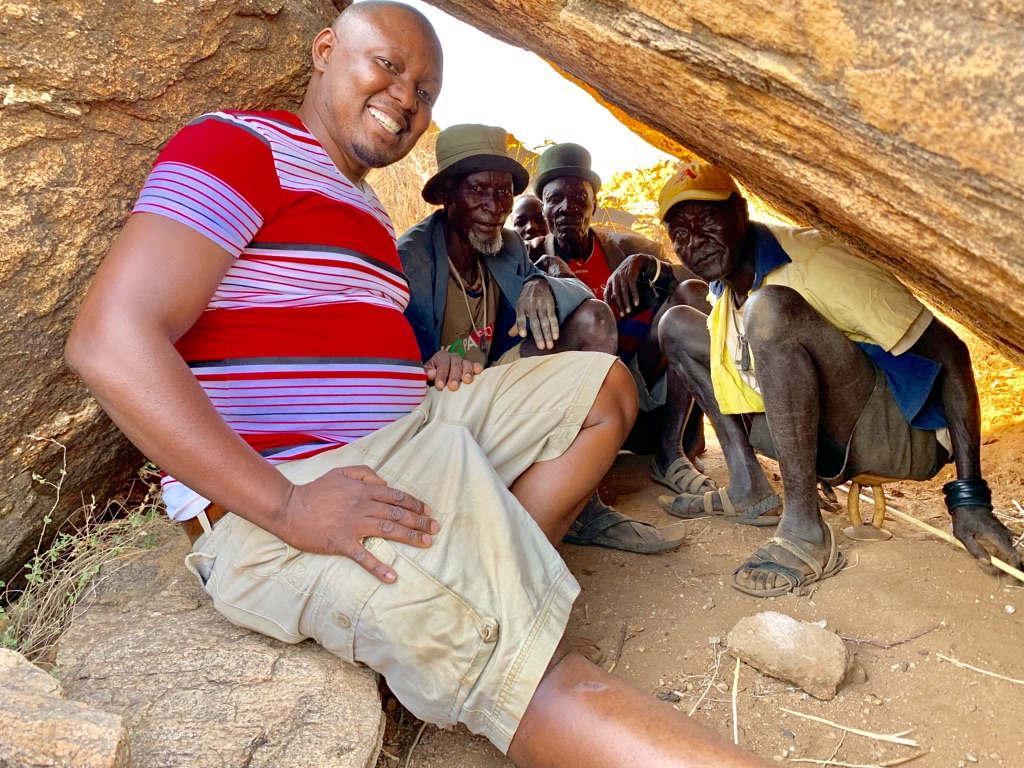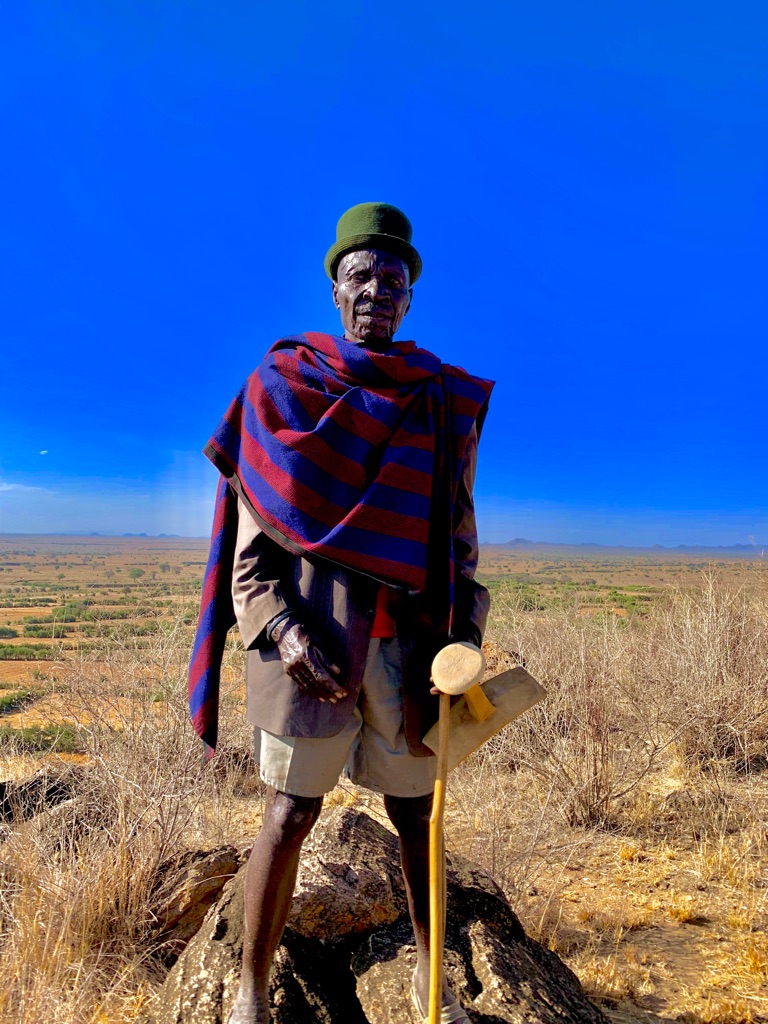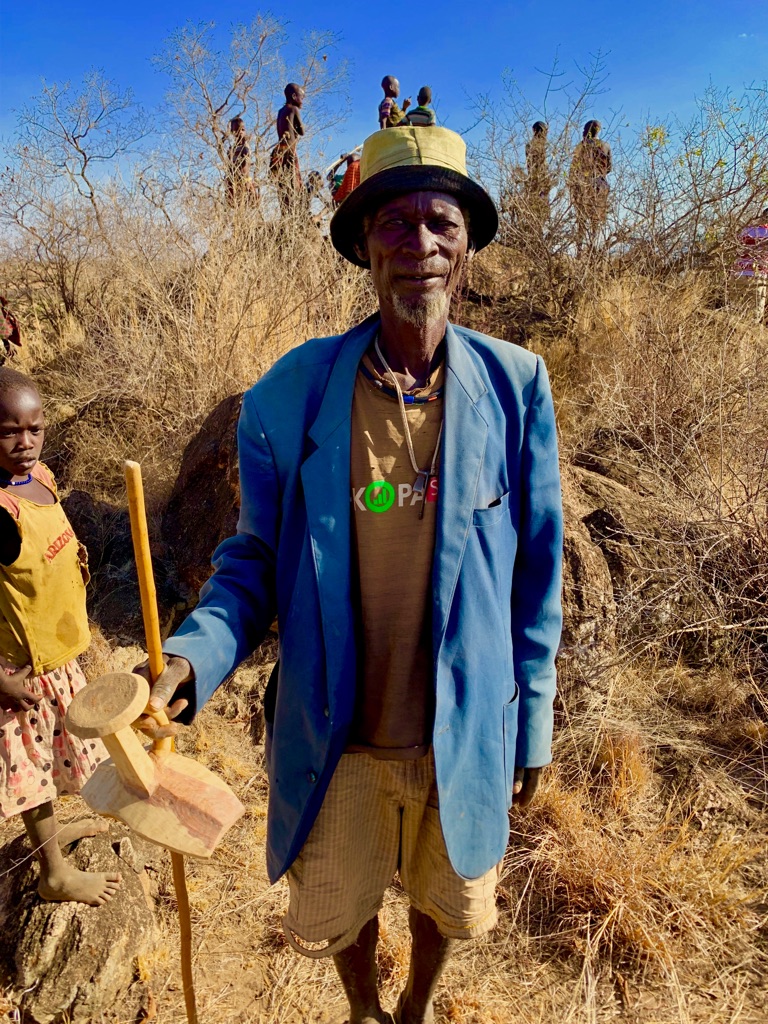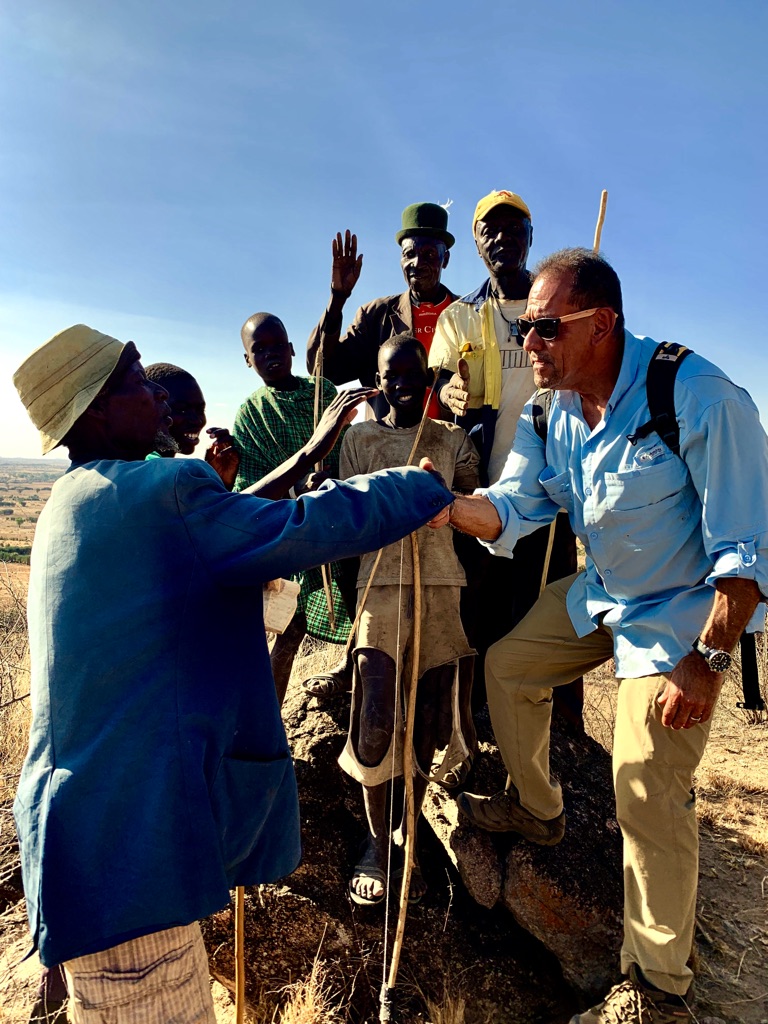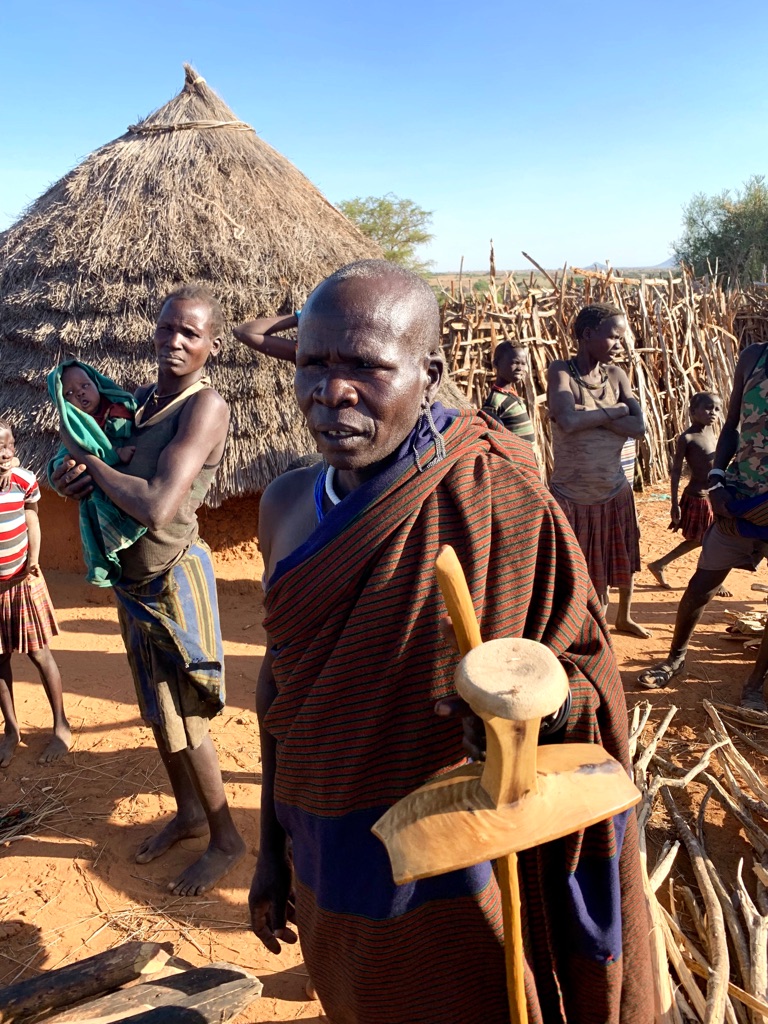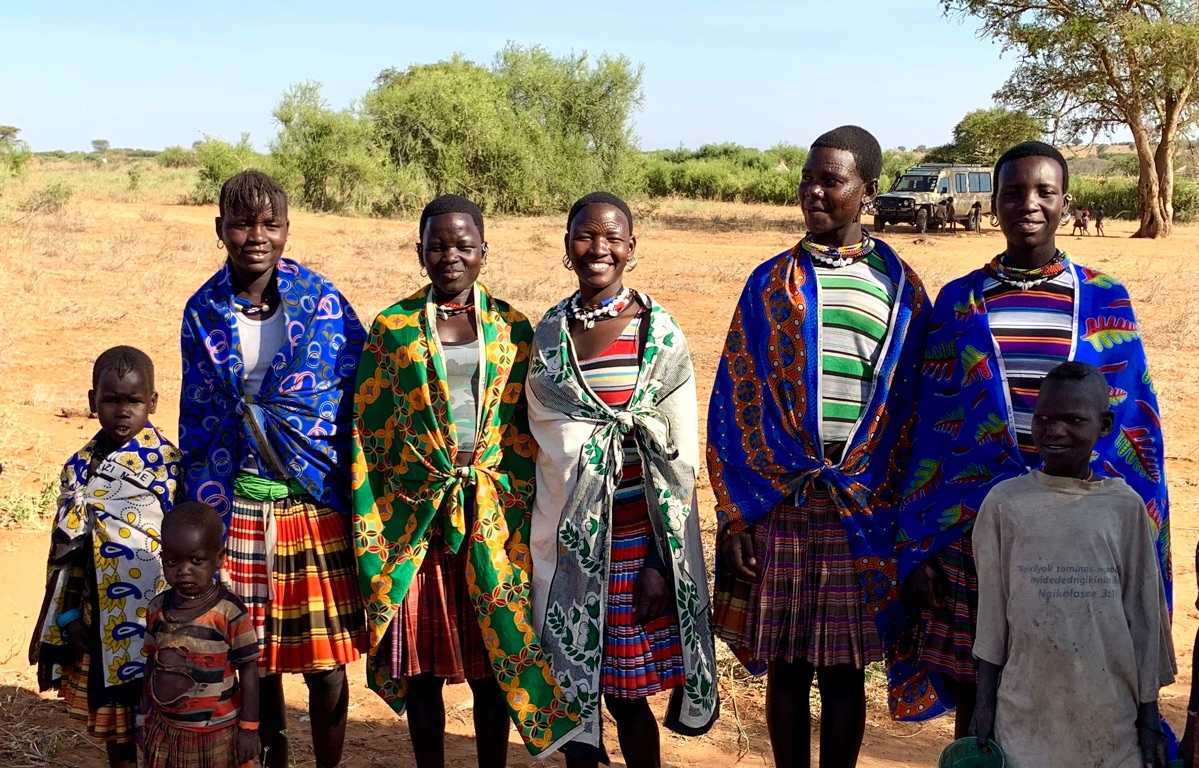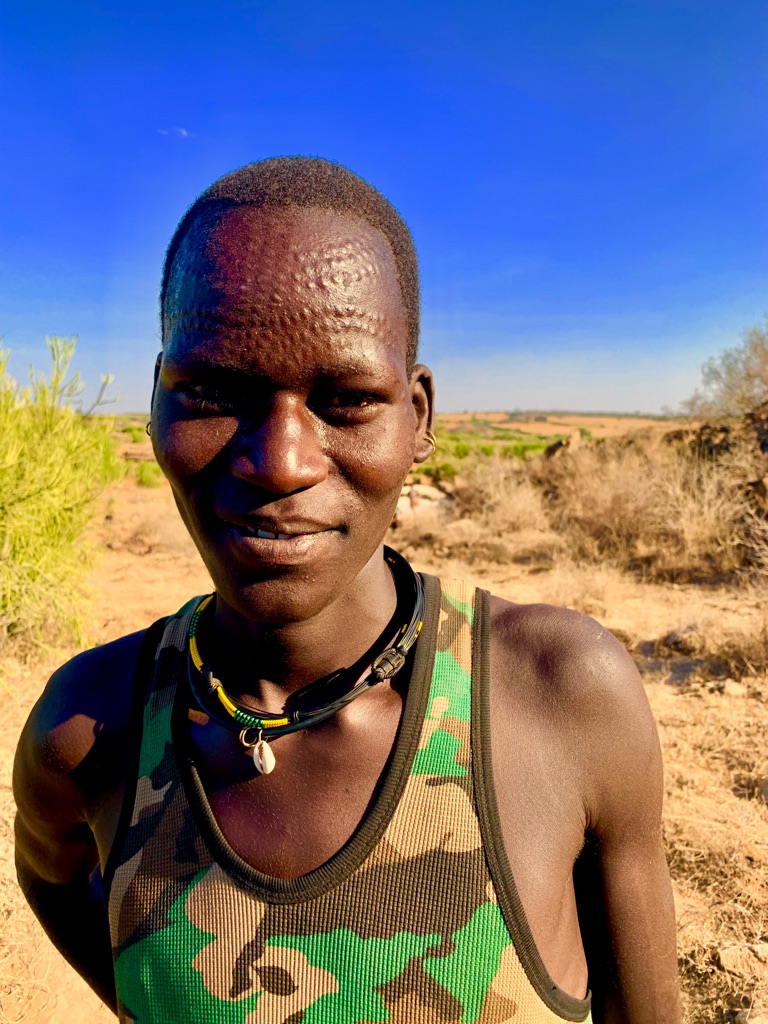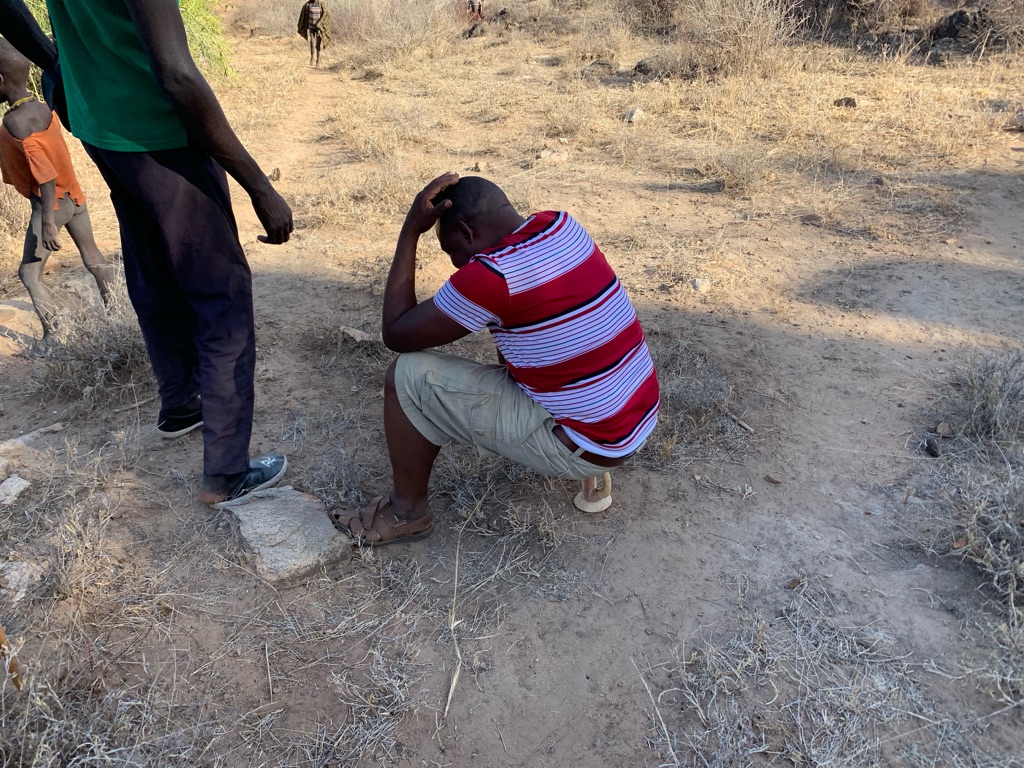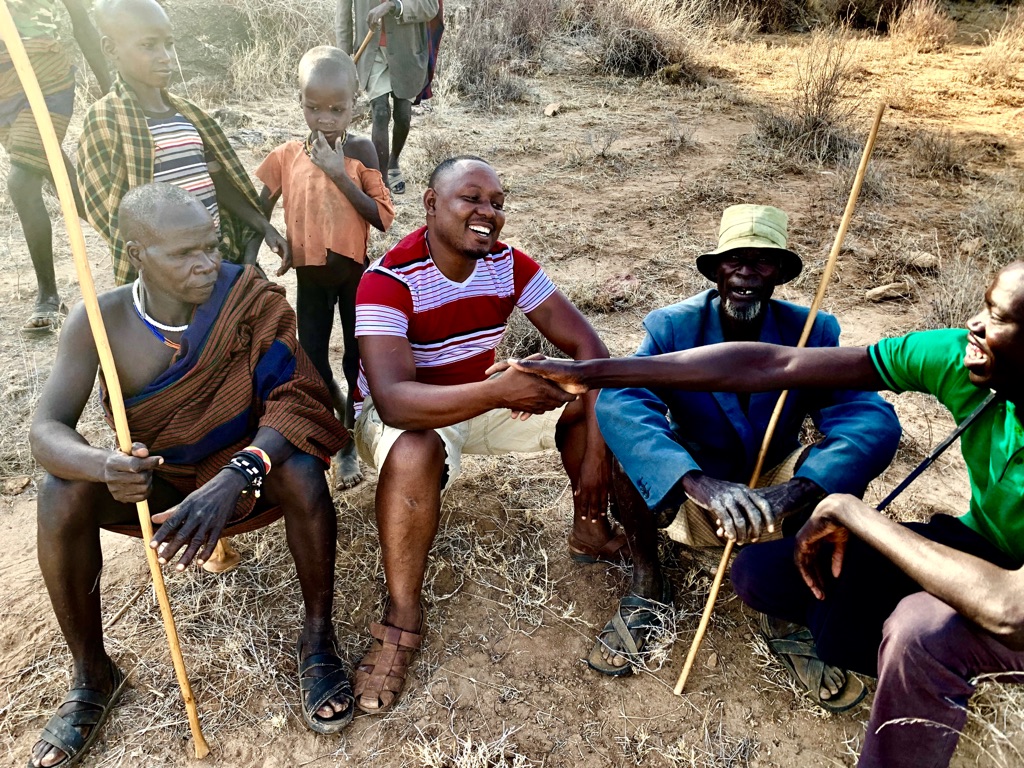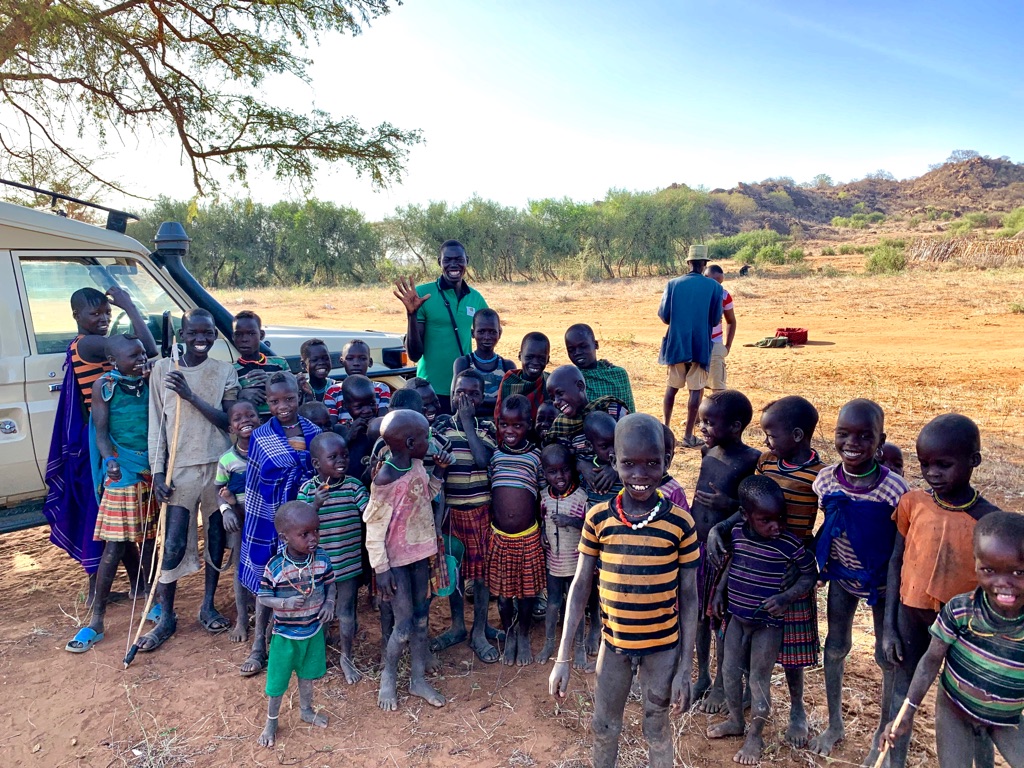Uganda: Are you a Karamojong or are you just Drunk?
Moroto Tents
With a heavy heart, we said goodbye to our new friend Moses and Sipi Falls and headed north along the border of Kenya towards the border of South Sudan. We first stopped at Moroto and the next morning headed to Kotido. Ultimately we would do our first game drive in Kidepo National Park, but first we would spend two days with the Karamojong and one of their sub-tribes the Ik.
Our accommodations at both places were unremarkable, tents and huts; however, our night in Moroto took a memorable turn. The tent was clean and comfortable with a private bathroom, however, it was just on the outskirts of town, across the street from some large entertainment venue. Once a month or so, the venue would host “concerts”. \240Well wouldn’t you know it, the monthly event took place on the very night we stayed there.
Tabacco Sniffing Drunk Karamojong

We readied for bed at about 8:30 as we were exhausted, but at 9:00 neon lights were illuminated, and chest thumping, Night at the Roxbury, club music, started. Intermittently, they introduced bad karaoke. Shortly after 10:00, the manager scratched at our tent, apologized for the noise, and gave us earplugs. Graciously we accepted but we knew the music would eventually die down. Oh but señor, how wrong you can be. The music thumped on until 6:15 AM; and yes, we were awake to enjoy every beat, every note, AND the grand finale. Our sheer exhaustion made for an interesting car ride the next morning.
Mary’s Seven Foot Friend
In total, we had four encounters with the Karamojong. Dating back to Dictator Idi Amin Dada, Ugandans remarked, Uganda will move forward but the Karamojong will stay behind.
Rock Top Home

The Karamojong are related to the Masai Warriors of Kenya, however, the Masai have moved forward, modernized and are attempting to assimilate, while the Karamajong have refused to budge. Their “wealth” is measured in cattle, which they hoard and refuse to eat or sell. They believe God willed all cattle to them so they often crossed into Kenya to poach cattle. They would have violent and deadly encounters with Kenyans and other Karamajong clans over \240cattle. Our host in Kotido recounted that not long ago, Karamojong clans would come down from the hills at night, exchange gunfire and hack each other with machetes. \240Much of the time both Karamojong men and women walked around mostly naked, carrying AK47’s. Based on negotiations between Uganda and Kenya, Uganda stepped in and forcibly disarmed the Karamojong.
Rock Family

Our first encounter with the hill Karamojong was in the afternoon in a remote settlement in Moroto. No sooner did our truck pull in when we were accosted by some severely intoxicated folks. One older woman with a tattered T-shirt and partially exposed breast, stumbled out yelling and flailing her arms. We soon learned that she wanted no pictures taken. Her staggering male counterpart postured and shoved, demonstrating a bone ring that signified his wealth. Our local guide carried a bag of sniffing tobacco, which he claimed they like; that was an understatement. Once they saw the bag of tobacco, they were drawn to it like a moth to a flame. \240Our two initial euphoric greeters now wanted hugs.
Elder Son and Grandchild

We hiked up the foothills for about an hour when we came across a young man measuring well over seven feet tall wrapped in traditional garments. He first wanted a picture with Mary and then wanted us to climb a rock to meet his family. We struggled to navigate up the vine covered rock which he easily navigated. \240Not visible from below, the concave top of the rock housed several huts, a make-shift kitchen, a few goats and an entire family. An older woman sat holding a grandchild surrounded by her adult male children. Younger women sat on the ground crushing corn with a stone in order to prepare the one meal the family would have for the day. The men were very animated and wanted their picture taken; with each other, in front of their huts, and even with their goats. Although the grandmother allowed us to photograph her, the women in the kitchen refused.

The meeting was touching and eye opening. We were awed that people in this day and age actually live in these conditions. On a rock! Moved by what we saw, we wanted to give the family a few shillings for allowing us to spend time with them. This sparked a small debate. Our local guide expressed that they rarely gave money during site visits and would normally ask the clan leaders to walk to town in the morning to collect it. He feared the family would be too drunk to remember receiving anything. Raymond weighed the options but wanted the family to know the gift came from us. \240Because this group did not appear to be intoxicated, we agreed the local guide would give the money to the grandmother for safe keeping. He handed over the 12,000 shillings we gave him, about $3.25 US, and we started our arduous descent from the high rock. Raymond never even noticed the seven foot man zoom past us but Mary and I caught a glimpse of him as he disappeared on the trail ahead of us.
Proud Home Owner

Before we had traversed halfway back to the car, the seven foot man returned with a full bag of vodka pouches. Similar to the alcohol nips sold in the US, kiosks in town sell small pouches of alcohol for about $0.20, capitalizing on the tribe’s alcoholism. He had obviously consumed his fair share of pouches on his return trip home. Valuable lesson for us and for Raymond, always listen to the local expert.
Twins and their Goat enjoyng their new fame

Our last two experiences with the Karamojong were in Kotido. We had hired a local guide through a Dutch woman who owned a private school and ran a small lodge. She boasted her guides were the best and was highly critical of other tour companies who brought their own guides. However, after over an hour wait for her guide, Moses, the young cabin boy whose job it was to sign people in and lug bags to huts, showed up with a guide’s shirt on. Raymond, Mary and I looked at each other, shrugged and jumped into the Land Cruiser with Moses. We don’t want to confuse you with our previous Moses, but Moses is a common name in Uganda. Attempting to be politically correct, the three of us, somewhat jokingly, \240eventually called this Moses the learning disabled Moses; we hope to adequately capture why.
Rock-top homes

The village we intended to visit was the largest single Karamojong encampment in Kotido. Our first point of order was to stop at the tribal chief’s administrative office (yes an actual government type office) to pay a stipend allowing us to visit his tribe. Because it was Sunday, we had to wait a few minutes for the chief to show. A few moments later an individual in western attire, shirt and slacks, pulled up in a \240Boda-Boda (Boda-Boda, short for border to border, are 125 to 250 cc motorcycles that supplant taxi’s in Uganda. Originally they were used to transport individuals from one border to another— for example Kenya to Congo) We paid the chief and headed to the village.
Karamojong Women Carrying Water

Our first clue that something was wrong was when we met the local clan chiefs. \240Four of them in their finest Sunday getups, suit jackets, hats, derby’s and staffs, grumbled in Karamojong, refusing us entry. Moses seemed confused and it was apparent that the head clansman had trouble deciphering what Moses was saying. We quickly realized that not only was Moses’s English skills deficient his Karamajong was just as bad. During his rantings, the clansman slipped and spoke a few words in English. Raymond quickly pounced and called him on it. It turned out he not only spoke understandable English he also spoke Swahili. Note that Swahili and English are only taught in school, which meant at some point the clan chief had some formal education.
Raymond & Clan Chiefs Sit In Ancestor’s Home

The clan chief explained that once the tribal chief was paid, none of that money ever made it to the clans or villagers. \240We apologized and offered them a few shilling — immediately we were transformed into the prodigals. The clan leaders wanted their picture taken, they wanted to show us where their fathers and grandfathers had lived and offered to sell us all manner of trinkets. Karamojong men carry small hand carved stools used to sit while visiting neighbors; with my help, Raymond was coerced into buying one. While Raymond, Mary and I interacted with kids and families, slow-Moses stood in the background and just watched.
Clan Chief

After our ruckus encounter with the clan chiefs we were allowed to enter the village proper. The villages are fenced with an intricate and impenetrable weaving of branches. Interestingly, the fences are built by women. The entrance is no more than a crawl space, camouflaged with a dry bush so that from afar the entrance is not detectable. Kids easily ducked in and out of the entrance while I had to crawl on my hands and knees. Sleeping huts and a thatched kitchen are nearest to the entrance while the enclosure for their precious cows is in the center of the compound.
English Speaking Head Clan Chief

A family unit is usually comprised of one man with as many wives as he can afford to keep. In this particular family the 60+ year old man had only two wives. The older one was out gathering firewood when we arrived and the younger one, a woman in her early to mid twenties, tended to the dozens of kids, including her youngest about a year old. Young women and some of the men decorate their faces with scar tissue. They form small cuts on their foreheads and around their eyes, which leaves raised scars. When asked, they said it fixes their eyes and makes them look better; I guess it’s an alternative to Maybelline. They have no electricity and the men wear \240only what amounts to be a loose fitting sheet. The women recently started wearing clothes, their outfits comprised of a threadbare t-shirt and a loose fitting skirt; no bra and no undergarments. \240Raymond joked that those factors could account for all the children.
Mending Fences with Clans

Family Leader with Young Wife and Baby behind
Young Women with Scar-Designed faces
Raymond on his New Karamojong Stool —looks like a stool of shame
We were glad that our last encounter with the Karamojong family was uneventful and somewhat pleasant. We found the initial alcohol fueled aggressiveness unpleasant but their harsh living conditions were never lost on us. They are trapped by tradition and expectations and cannot fathom change. They are the scourge of Ugandan society, often found as beggars or thieves in the major cities. One young man we met had attended secondary school, was literate and spoke multiple languages. However, once back in the village was faced with no jobs and no opportunities. The unintended message to the rest of the village was the futility of education.
Village Children with Slow Moses waving behind them \240and poor Raymond still getting shaken down by the Clan Chief in the background
Truly grateful for having been graced with the chance to encounter such a remote and seemingly primitive culture, even by \240Ugandan standards, we were off to the national parks to find Uganda’s other treasure, their abundant wildlife.




























